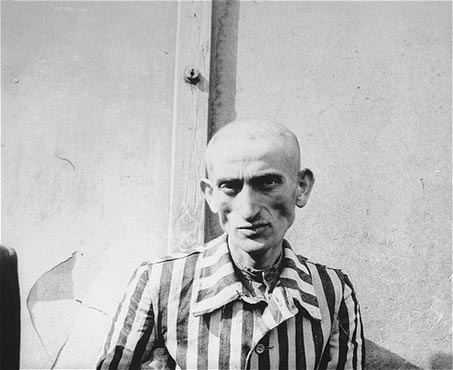45th Thunderbird Division of US 7th Army"I got orders by radio directing me to take the concentration camp . The orders pissed me off no end because that would slow us down. I didn't consider the concentration camp a military objective." Lt. Col. Felix Sparks, 45th Division, 3rd Battalion, 157th regiment, quoted in The Rock of Anzio by Flint Whitlock  The 45th Infantry Division traces its roots back to 1890 when the Oklahoma Territorial Militia was formed. The Militia fought in the Spanish American War in Cuba even before Oklahoma became a state in 1907. Many of these militia members were Native Americans, who by that time had been defeated by the American Army and put onto reservations in the Oklahoma Territory. The 45th Infantry Division was formed in 1923, and on August 11, 1924, it adopted an ancient symbol used by Native Americans, called the swastika. A militia group in Germany, called the Freikorp, had already adopted the swastika and was using the symbol on arm bands that they wore in 1919 when they fought the Communists in the streets of Bavaria. Many of the early leaders of the Nazi party came from the ranks of the Freikorp, and the party also adopted the swastika as its symbol in the early 1920ies. By 1938, Nazi Germany had become very unpopular and the 45th Thunderbird Division wisely decided to replace its emblem in April 1939 with the Thunderbird, another Native American symbol. Although the American armed forces were segregated during the period between the Civil War and the end of World War II with blacks, whites and Asians fighting in separate outfits, the men of the 45th Infantry Division included thousands of Native Americans. According to Flint Whitlock in his book "The Rock of Anzio," there were over 50 tribes of American Indians represented, including Cherokee, Choctaw, Seminole, Apache, Sioux, Kiowa, Pawnee, Comanche, Osage, Creek, Navaho and Hopi. The 45th was a National Guard unit which had been called up to fight in World War I in 1917. Even before the start of World War II, the 45th was activated and began training at Fort Sill, Oklahoma. The 45th division was sent to Algeria in North Africa in June 1943 where they underwent intensive amphibious training for the invasion of Sicily a month later. It was because of the extension of World War II into North Africa that the Nazis began experiments at Dachau on a cure or a vaccine for malaria. Aside from the liberation of Dachau, the 45th Infantry Division is most famous for defeating the Germans at Anzio, one of the decisive battles of World War II which took place in Italy, 35 miles from Rome. The 45th had made another amphibious landing at Anzio, surprising the Germans, but seven German divisions then launched a counter offensive against them in February 1944. The battle of Anzio lasted five long months before the 45th Division defeated the Germans and went on to capture Rome. The fierce battle at Anzio has come to be regarded as one of the greatest battles of all time, equal to Gettysburg, Verdun and Stalingrad, according to Flint Whitlock. The amphibious landing at Anzio turned out to be great practice for the landing on D-Day, which has overshadowed the heroic fight of the 45th at Anzio. In August 1944, the 45th division landed in France and joined the 42nd Rainbow division on the drive through France and Germany. Together with the 42nd division, they captured Nuremberg, an important city for the Germans because it was where the Nazi party held its elaborate annual rallies. Then it was on to Munich, where the 45th and the 42nd captured the city on April 30, a week before the German surrender. It was on the drive toward Munich that the 45th was ordered to take the infamous Nazi concentration camp in the small town of Dachau, located about 12 miles northwest of the city. During World War II, the 45th fought in 511 days of combat. Over 20,000 soldiers in the division were killed, wounded or missing in action. The major accomplishments, for which the 45th is remembered, are the liberation of 32,000 inmates at Dachau and the battle at Anzio, which was a turning point in the victory of the Allies in World War II. 42nd Rainbow DivisionExecution of German SS soldiersThe Killing of the guards in Tower BBack to Liberation of DachauBack to Table of ContentsHomeThis page was last updated on September 22, 2010 |